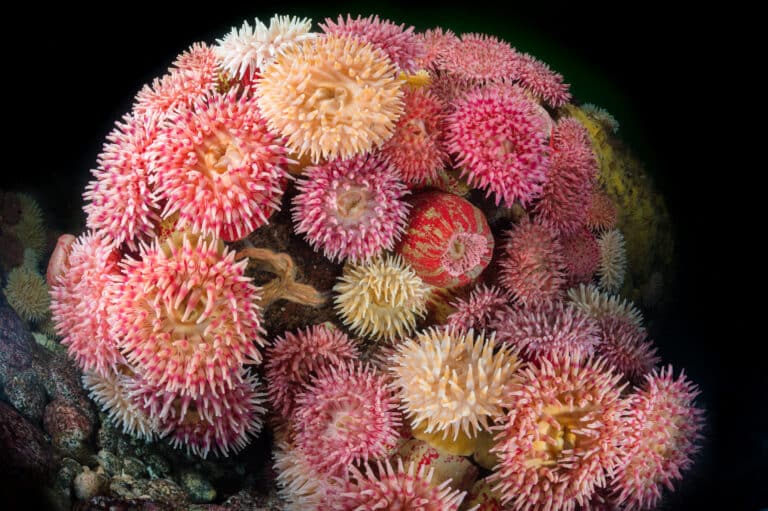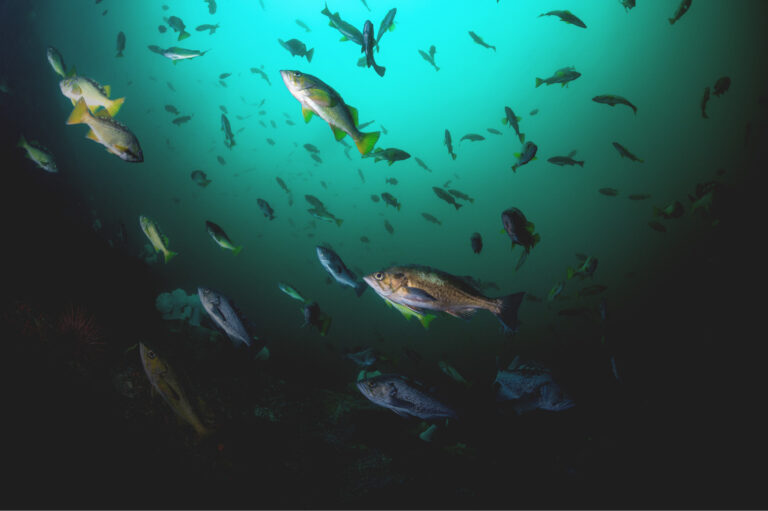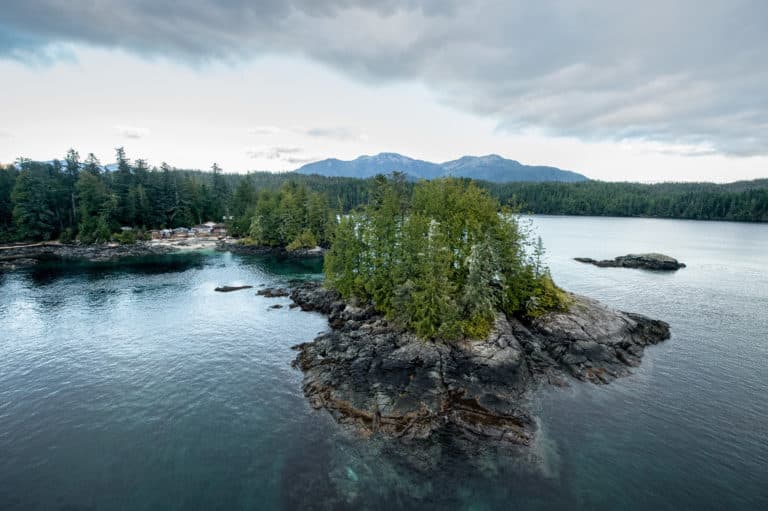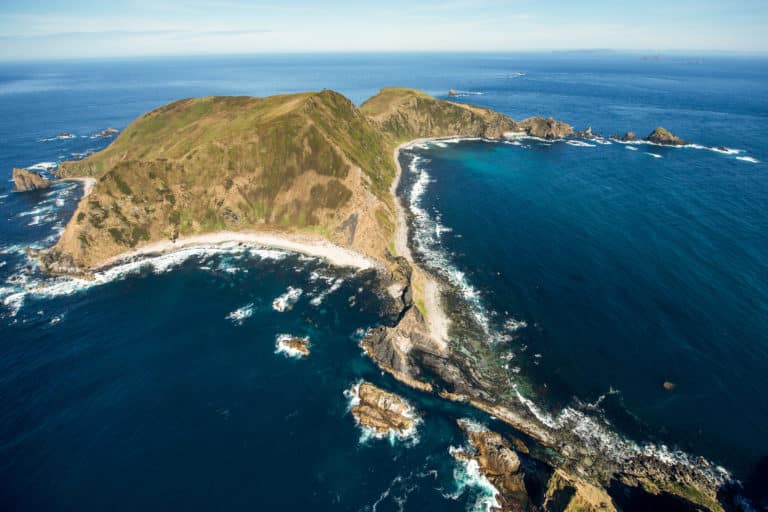# 1 Safeguard biodiversity and protect at-risk species and habitats
Marine Protected Areas (MPAs) and MPA networks can provide incredible ecological benefits to the ecosystems they protect and beyond. Studies have shown that MPAs can boost the size of individual marine organisms as well as increase the abundance and diversity of marine life; in turn, this elevates the overall productivity and resilience of the entire ecosystem.[1][2][3] Well designed MPAs contribute to the protection of the structure, function, integrity, richness and resilience of ecosystem by providing refuge for harvested species and protecting habitats critical to life cycle stages, such as spawning, juvenile rearing and feeding.[4][5] Additionally, they often complement adjacent terrestrial protected areas for species who use freshwater and marine ecosystems (e.g. salmon.) and contribute to the restoration and recovery of at-risk species, habitats and ecosystems, like glass sponge reefs. MPAs can also provide a safe haven and “stress free” refuge for mobile or migratory species. A global synthesis of 124 fully-protected MPAs found that, on average, marine life has 4.5 times more biomass, 28% larger body size, and 21% higher species diversity within MPAs than in other non-protected areas.[6] Additionally, a 2018 study determined that biomass in fully protected MPAs may be 670% greater than in adjacent unprotected areas; the authors concluded that:
“MPAs are an essential tool for reversing the global degradation of ocean life”.[7]
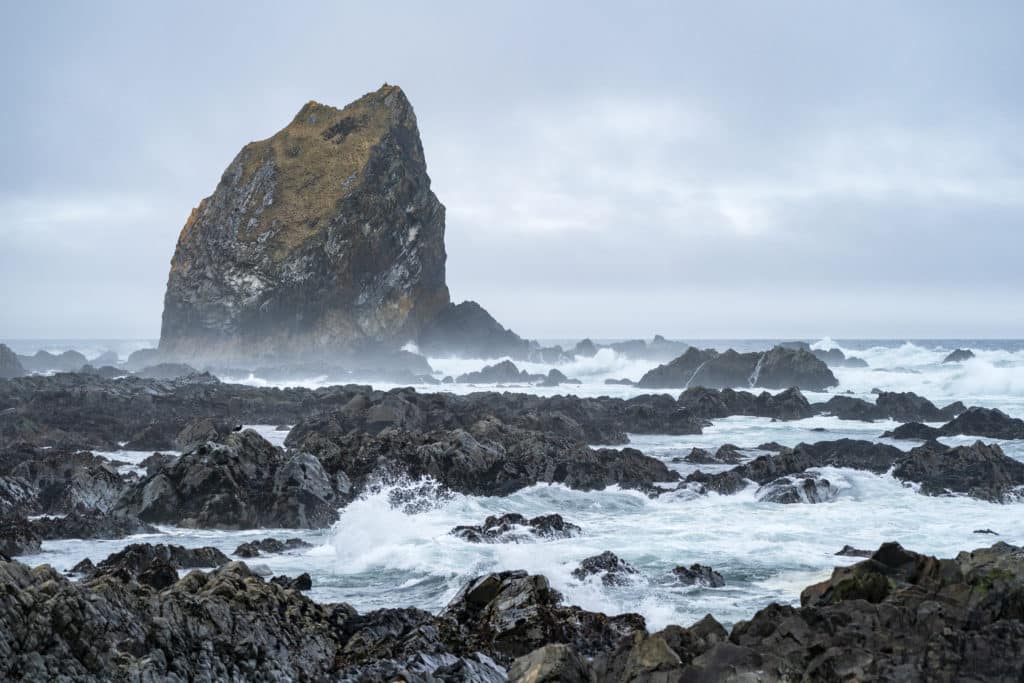
#2 MPAs can help mitigate against climate change
Marine Protected Areas (MPAs) play an important role in helping us mitigate and adapt to the current climate and biodiversity crises[10]. MPAs act as an ecological “insurance policy” against ecosystem collapse and help address climate change by preserving biodiversity and protecting features that sequester carbon and buffer coasts against rising tides and storm surges such as salt marshes, seagrass meadows, and kelp forests.[11][12] Studies have found that seagrasses, like eelgrass, account for about 10% of the ocean’s capacity to store carbon despite covering only about 0.2% of the global sea floor.[13] Amazingly, seagrasses can capture carbon from the atmosphere up to 35 times faster than terrestrial forests![14] Seagrass meadows also protect coastlines from erosion, help to reduce sediment in the water and provide important habitat space for many species.[15] When implemented, the Northern Shelf Bioregion MPA Network will protect large swaths of eelgrass meadows and kelp forests across the coast of B.C., helping to preserve the invaluable ecosystem services they provide such as mitigating climate change.
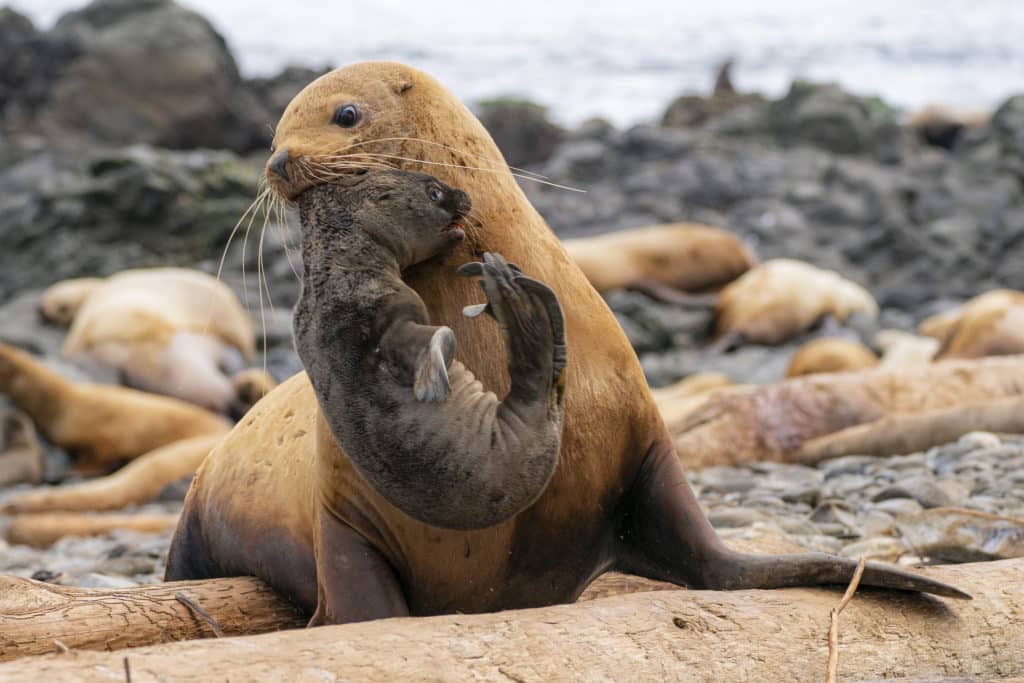
#3 MPAs help to support healthy coastal communities
There has been decades of scientific research that supports marine protected areas (MPAs) as a highly effective tool for the conservation of marine biodiversity, ecosystems and for sustainably managing marine resources. MPAs maintain and enhance the invaluable ecosystem services that human communities receive, and rely upon, from the marine environment. Marine ecosystem services include: provisioning services (e.g. harvestable goods—fish, shellfish and seaweed for food, minerals, health products), cultural (e.g. non-material benefits—recreation, education, research, spiritual, cultural heritage and identity), regulating (e.g. climate regulation, waste treatment, erosion protection, oxygen production), and supporting services (e.g. biodiversity and gene pool protection, ecosystem process and lifecycle maintenance). All of these services greatly contribute towards individual and community well-being.[16]
The implementation of MPAs inevitably has an effect on the coastal communities they are established around. As such, there is a large bulk of research investigating the economic impact and value of MPAs on coastal communities. While MPAs can have both positive and negative implications, the research is clear: overall, well-designed and well-managed MPAs have more positive outcomes and show considerable returns on investment. [17]
From an economic perspective, MPAs contribute to B.C.’s “blue economy” that encompasses industries such as fisheries, tourism, shipping, and more. Research has found that, for every one dollar “invested” into MPAs, they can return up to twenty dollars in benefits; furthermore, these benefits may be seen in as little as five years. [18][19] Tourism and recreation are B.C.’s second largest ($5.8 billion/year) and second fastest growing sector in our blue economy, after transportation. [20] This sector benefits greatly from well-preserved ecosystems and an abundance of wildlife. When sustainably operated, eco-tourism and recreation-based industries can help aid conservation initiatives by generating funds (e.g. for research) and raising public awareness.
Emerging research of the non-monetary benefits suggests that MPAs provide a therapeutic and restorative place for humans to visit which can contribute to improved well-being and have positive mental health benefits. [21]
#4 Increase the commercial & recreational fishing catches in surrounding areas
The United Nations Food and Agricultural Organization estimates that 85% of marine fish stocks are either fully exploited or overfished. The mismanagement of fish stocks and over exploitation of resources are the primary cause for these declines, with impacts now being exacerbated by climate change at an unprecedented rate. In addition to creating ecological disasters, this is a major food security and social justice issue. The ocean provides 3 billion people worldwide with their primary source of protein; furthermore, fisheries and access to marine resources form the cultural backbone for many coastal communities.[22] As reliable fish stocks become evermore inaccessible in B.C., the “devastating effects for…cultures and food security” pose a threat for many coastal communities. [23]
Case studies from global conservation literature illustrate that marine protected areas (MPAs) can have beneficial effects on both recreational and commercial fisheries. They do this by exponentially increasing the abundance and quality of targeted fish and shellfish species.[24] By reducing or eliminating fishing pressure within their borders, highly protected MPAs provide a safe haven for harvested species to grow larger and live longer. Larger, older fish can produce hundreds or thousands more offspring over their lifetime that go on to disperse into unprotected waters. [25][26] This well studied phenomenon is called the “spillover effect” and can contribute towards stock recovery.[27]
A case study from the Pacific Northwest found that, within a fully protected “no-take” area, lingcod produced 20 times more eggs and copper rockfish produced 100 times more eggs than their species counterparts outside of the MPA boundary.[28] By acting as a provisioning service for adjacent fisheries, MPAs are an investment into sustainable fisheries and help to safeguard food and cultural security for coastal communities and future generations. By helping to rebuild and sustain fisheries, MPAs can be used as an effective conservation management tool, especially when combined with better fisheries management practices.
In many cases, the benefits of well-managed MPAs are significantly higher than the estimated or initial costs to fisheries, coastal communities and other stakeholder groups. The economic benefits of MPAs to fisheries – such as increased revenues, greater yields and reduced effort-related costs – may be yielded in less than a decade and can be felt up to 100 kms from the MPA’s borders, depending on the lifespan and distribution rates of target species.[29][30][31][32] In 2020, the World Economic Forum stated the following:
“As evidence of the benefits of MPAs continues to emerge, the people and organizations governing them at local, national and international scales need to learn and evolve.” [33]
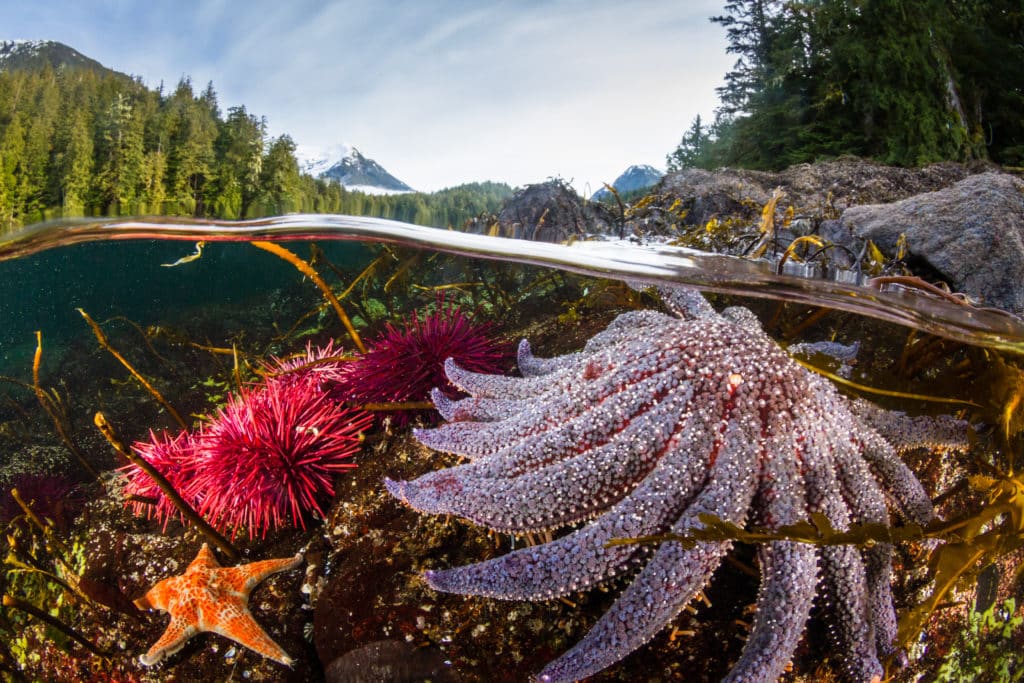
#5 Provide opportunity for co-governance and protect culturally important sites
For over a decade, 17 First Nations, the government of B.C., and the government of Canada have been working together to develop Canada’s first marine protected area (MPA) network, the Northern Shelf Bioregion Marine Protected Area Network. When implemented, this network of MPAs will provide an opportunity for co-governance and reconciliation by upholding Indigenous legal traditions within the territories they have been governing and sustainably managing for thousands of years. In a 2022 paper, the Central Coast Indigenous Resource Alliance affirmed that:
“Conservation and protection of ecosystems has always been our primary objective; everything else flows from that responsibility”.[34]
Within a co-governed MPA, equal power sharing ideally occurs between Indigenous and Canadian governments. Management should be grounded in both Canadian and Indigenous law and may provide the opportunity to transition to more exclusively Indigenous governed protected areas in the future. Indigenous governance over marine and terrestrial territories is inherent and Nations can designate MPAs and other protected areas using their own laws as part of their jurisdiction. An example of this is the newly established and highly celebrated Gitdisdzu Lugyeks (Kitasu Bay) MPA declared by the Kitasoo Xai’xais Nation in 2022.[35]
“We continue to depend on surrounding ecosystems and remain obligated, by traditional law, to engage in their restoration and conservation.” [36]
In addition to protecting species and ecosystems, MPAs can be created to conserve and protect areas with spiritual or cultural value to coastal First Nations and support traditional harvesting uses. By protecting culturally important features and First Nations’ harvesting areas, MPAs can be used as an effective tool to ensure long-term food security for coastal communities.
How you can take action:
It is time for us to listen and learn from global scientists, First Nations and invest in the future of our blue economy, food, ecological and cultural securities. Help protect B.C.’s incredible biodiversity and coastal ecosystems by adding your voice to support Pacific Wild’s #30by30 MPA campaign. Add your support in person: public consultations are taking place October 2022 all the way up the coast. Check here to see the event closest to you.
You can learn more about MPAs and the Northern Shelf Bioregion Marine Protected Area Network (NSB MPAN) by exploring the CPAWS interactive Story Map website and by doing a deep dive into the NSB MPAN Action Plan. Let’s do our part to protect 30% of the world’s oceans by 2030!
